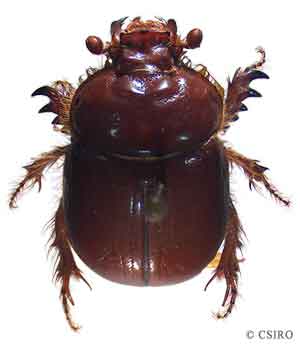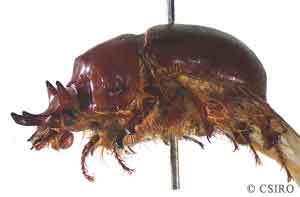
|
GEOTRUPIDAE |
|
| ||||||||||||
|
Members of this family are closely related to scarab beetles but can be distinguished from the later as they have one extra segment (11 in total) on their antennae, and the last 3 segments form a distinctive circular club. They are very stoutly built beetles and range in size from 8-30 millimetres in length. Most adults are reddish-brown to brown in colour, although a few may be black. The head and pronotum of male geotrupids is often adorned with prominent horns and as such members of this species are often called rhinoceros beetles.
Not much is known of the biology of geotrupid beetles and it is thought in Australia most adults lay their eggs in burrows in the soil and provide their larvae with decaying organic matter, hypogean fungi or dung to feed on. Geotrupids are often attracted to lights at night and will often emit a hissing or chirping sound when disturbed. Both the larvae and adults are able to produce sound by rubbing parts of their body together.
For more geotrupid beetle species visit the Australian Insect Common Names - Geotrupidae section found here. |

